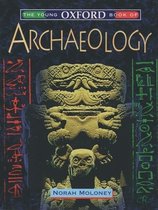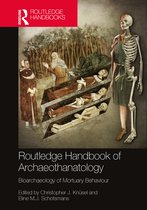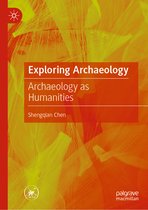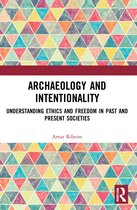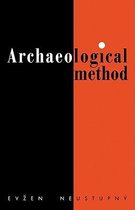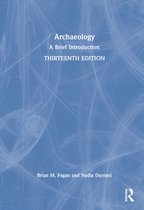Oxford Handbook of Cognitive Archaeology
Afbeeldingen
Artikel vergelijken
Uitgever: Oxford University Press
- Engels
- Hardcover
- 9780192895950
- 27 maart 2024
- 1328 pagina's
Oxford University Press
Oxford University Press had its origins in the information technology revolution of the late fifteenth century, which began with the invention of printing from movable type. The first book was printed in Oxford in 1478, only two years after Caxton set up the first printing press in England.
Despite this early start, the printing industry in Oxford developed in a somewhat haphazard fashion over the next century. It consisted of a number of short-lived private businesses, some patronized by the University. But in 1586 the University itself obtained a decree from the Star Chamber confirming its privilege to print books. This was further enhanced in the Great Charter secured by Archbishop Laud from King Charles I, which entitled the University to print 'all manner of books'.
The University established its right to print the King James Authorized Version of the Bible in the seventeenth century. This Bible Privilege formed the basis of a profitable business throughout the next two centuries and was the spur to OUP's expansion. A Bible warehouse was set up in London, which later grew into a major publisher of books with educational or cultural content aimed at the general reader. OUP then began to expand internationally, starting with the opening of an American office in 1896.
Oxford's traditions of religious and academic publication were followed in New York. The first book published by the American office was the Scofield Reference Bible in 1909. After it came The Life of Sir William Osler, which won the Pulitzer Prize in 1926. Six more Pulitzers, several National Book Awards, and over a dozen Bancroft Prizes in American history have followed since.
Since 1896, the business has changed considerably, with the growth and evolution of schools' publishing, particularly in the Branches; the introduction of English Language Teaching, Music, Journals, and Trade and General publishing; and the use of new technologies.
Samenvatting
This book showcases the theories, methods, and accomplishments of archaeologists who investigate the human mind through material forms. It encompasses the wide spectrum of cognitive archeology, showcasing contributions from scholars globally. It delivers analysis of material culture, from stone tools to ceramic and rock art of the past millennium.
Cognitive Archaeology is a relatively young though fast growing discipline. The intellectual heart of cognitive archaeology is archaeology, the discipline that investigates the only direct evidence of the actions and decisions of prehistoric people. Its theories and methods are an eclectic mix of psychological, neuroscientific, paleoneurological, philosophical, anthropological, ethnographic, comparative, aesthetic, and experimental theories, methods, and models, united only by their focus on cognition. The Oxford Handbook of Cognitive Archaeology is a landmark publication, showcasing the theories, methods, and accomplishments of archaeologists who investigate the human mind, including its evolutionary development, its ideation (thoughts and beliefs), and its very nature-through material forms. The volume encompasses the wide spectrum of the discipline, showcasing contributions from more than 50 established and emerging scholars from Europe, Africa, Asia, Australia, and the Americas. Prominent among these are contributions that discuss the epistemological frameworks of both the evolutionary and ideational approaches and the leading theories that ground interpretations. Significantly, the majority of chapters deliver substantive contributions that analyze specific examples of material culture, from the oldest known stone tools to ceramic and rock art traditions of the recent millennium. These examples include the gamut of methods and techniques, including typology, replication studies, chaînes operatoires, neuroarchaeology, ethnographic comparison, and the direct historical approach. In addition, the book begins with retrospective essays by several of the pioneers of cognitive archaeology, presenting a broad range of state-of-the-art investigations into cognitive abilities, tackling thorny issues like the cognitive status of Neandertals, and concluding with speculative essays about the future of an archaeology of mind, and of the mind itself.
Cognitive Archaeology is a relatively young though fast growing discipline. The intellectual heart of cognitive archaeology is archaeology, the discipline that investigates the only direct evidence of the actions and decisions of prehistoric people. Its theories and methods are an eclectic mix of psychological, neuroscientific, paleoneurological, philosophical, anthropological, ethnographic, comparative, aesthetic, and experimental theories, methods, and models, united only by their focus on cognition. The Oxford Handbook of Cognitive Archaeology is a landmark publication, showcasing the theories, methods, and accomplishments of archaeologists who investigate the human mind, including its evolutionary development, its ideation (thoughts and beliefs), and its very nature-through material forms. The volume encompasses the wide spectrum of the discipline, showcasing contributions from more than 50 established and emerging scholars from Europe, Africa, Asia, Australia, and the Americas. Prominent among these are contributions that discuss the epistemological frameworks of both the evolutionary and ideational approaches and the leading theories that ground interpretations. Significantly, the majority of chapters deliver substantive contributions that analyze specific examples of material culture, from the oldest known stone tools to ceramic and rock art traditions of the recent millennium. These examples include the gamut of methods and techniques, including typology, replication studies, chaînes operatoires, neuroarchaeology, ethnographic comparison, and the direct historical approach. In addition, the book begins with retrospective essays by several of the pioneers of cognitive archaeology, presenting a broad range of state-of-the-art investigations into cognitive abilities, tackling thorny issues like the cognitive status of Neandertals, and concluding with speculative essays about the future of an archaeology of mind, and of the mind itself.
Productspecificaties
Wij vonden geen specificaties voor jouw zoekopdracht '{SEARCH}'.
Inhoud
- Taal
- en
- Bindwijze
- Hardcover
- Oorspronkelijke releasedatum
- 27 maart 2024
- Aantal pagina's
- 1328
Betrokkenen
- Hoofduitgeverij
- Oxford University Press
Overige kenmerken
- Product breedte
- 180 mm
- Product hoogte
- 60 mm
- Product lengte
- 255 mm
- Verpakking breedte
- 180 mm
- Verpakking hoogte
- 60 mm
- Verpakking lengte
- 255 mm
- Verpakkingsgewicht
- 2422 g
EAN
- EAN
- 9780192895950
Je vindt dit artikel in
- Categorieën
- Taal
- Engels
- Boek, ebook of luisterboek?
- Boek
- Studieboek of algemeen
- Algemene boeken
Kies gewenste uitvoering
Bindwijze
: Hardcover
Prijsinformatie en bestellen
Rapporteer dit artikel
Je wilt melding doen van illegale inhoud over dit artikel:
- Ik wil melding doen als klant
- Ik wil melding doen als autoriteit of trusted flagger
- Ik wil melding doen als partner
- Ik wil melding doen als merkhouder
Geen klant, autoriteit, trusted flagger, merkhouder of partner? Gebruik dan onderstaande link om melding te doen.

